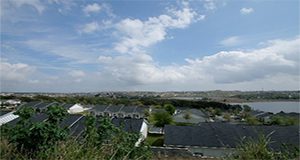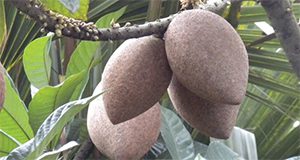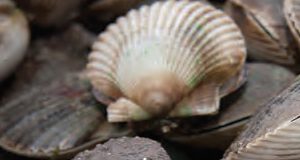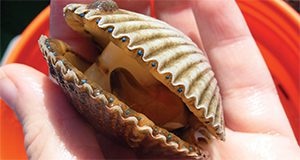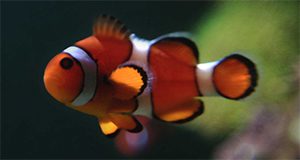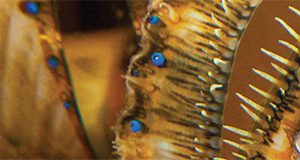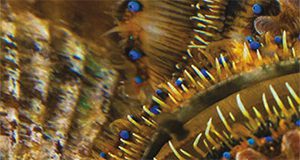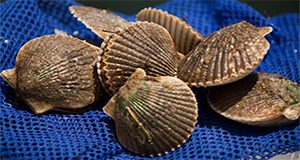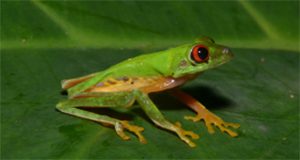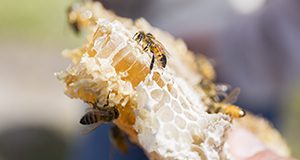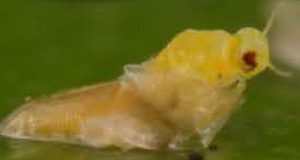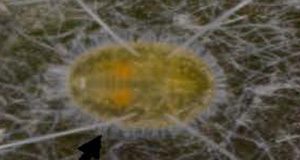This 5-page document written by Lisa Krimsky, Andrea Albertin, Charles Barrett, James Fletcher, and Mary Lusk and published by the UF/IFAS Program in Fisheries and Aquatic Sciences of the School of Forest Resources and Conservation is intended to act as a quick reference guide and is not inclusive of all measures in SB 552. This summary addresses the Florida Springs and Aquifer Protection Act, the Central Florida Water Initiative, Northern Everglades and Estuaries Protection, and Pilot Programs for Alternative Water Supply.
http://edis.ifas.ufl.edu/fa205
Author: Susan Gildersleeve
Cost and Return Estimates of a Mamey Sapote Grove in South Florida, 2017
The objective of this 6-page fact sheet written by Fredy H. Ballen, Aditya Singh, Edward A. Evans, and Jonathan Crane and published by the UF/IFAS Food and Resource Economics Department is to provide an estimate of the costs and returns associated with an established mamey sapote orchard in south Florida.
http://edis.ifas.ufl.edu/fe1039
Bed Fishing for Florida Bass
Florida bass, Micropterus floridanus, is the most popular freshwater sport fish in the state of Florida. Florida bass guard their nests for up to 2 weeks, and many anglers target the prized sport fish during this period using a procedure called bed fishing. This 7-page fact sheet written by John S. Hargrove and James D. Austin and published by the UF/IFAS School of Forest Resources and Conservation, Program in Fisheries and Aquatic Sciences, outlines the reproductive biology of Florida bass, the known consequences of bed fishing, and practices to minimize its impacts.
http://edis.ifas.ufl.edu/fa204
Recreational Harvesting of the Florida Bay Scallop: Taylor County
This useful brochure includes a full-color map identifying access routes to the boat ramps and marinas in southern Taylor County near Steinhatchee and Keaton Beach plus the latest information on scallops and scalloping, the recommended equipment you will want to bring, and a few tasty recipes for preparing Florida’s best summertime catch. Written by Victor Blanco and published by the UF/IFAS Extension Florida Sea Grant College Program.
http://edis.ifas.ufl.edu/sg146
Recreational Harvest of the Florida Bay Scallop: Hernando County
This useful brochure written by Brittany Hall-Scharf and published by the UF/IFAS Florida Sea Grant College Program includes a full-color map identifying access routes to the boat ramps and marinas in Hernando County. Also find the latest information on scallops and scalloping, the recommended equipment you will want to bring, and a few tasty recipes for preparing Florida’s best summertime catch.
http://edis.ifas.ufl.edu/sg148
How Ornamental Fishes Get Their Color
Color in fish is mostly genetically determined, but they are unable to produce red, orange, yellow, green, and some blue colors themselves.They get these colors from their food. Fish raised in aquariums or recirculating water systems without pigment supplementation in their diet will fade and lose their vibrant hues. Even in ponds, dietary pigment supplementation can make fishes brighter and more variably colored, just like their wild counterparts. This 6-page fact sheet written by F. A. Chapman and R. D. Miles and published by the UF/IFAS School of Forest Resources and Conservation, Program in Fisheries and Aquatic Sciences, addresses how ornamental fish get their colors and provides a list of ingredient sources for diets that can be used to enhance and intensify fish colors.
Recreational Harvesting of the Florida Bay Scallop: Wakulla County
This handy brochure includes a full-color map identifying access routes to the boat ramps and marinas in Wakulla County, plus the latest information on scallops and scalloping, the recommended equipment you will want to bring, and a few tasty recipes for preparing Florida’s best summertime catch. Written by Savanna Barry and published by the UF/IFAS Extension Florida Sea Grant College Program.
http://edis.ifas.ufl.edu/sg149
Recreational Harvesting of the Florida Bay Scallop: Citrus County
This handy brochure written by Savanna Barry and published by the UF/IFAS Florida Sea Grant College Program includes a full-color map identifying access routes to the boat ramps and marinas in Citrus County near Homosassa and Crystal River, plus the latest information on scallops and scalloping, the recommended equipment you will want to bring, and a few tasty recipes for preparing Florida’s best summertime catch.
http://edis.ifas.ufl.edu/sg147
Recreational Harvesting of the Florida Bay Scallop: Pasco County
This useful brochure written by Brittany Hall-Scharf and published by the UF/IFAS Extension Florida Sea Grant College Program includes a full-color map identifying access routes to the boat ramps and marinas in Pasco County, plus the latest information on scallops and scalloping, the recommended equipment you will want to bring, and a few tasty recipes for preparing Florida’s best summertime catch.
http://edis.ifas.ufl.edu/sg157
Pest Identification Guide: Solanum (Pepper) Whitefly, Aleurotrachelus trachoides
Considered an emerging pest in Florida, the solanum whitefly has been in the state since at least the 1960s. It eats pepper, eggplant, and tomato, as well as other food crops, ornamental plants, and weeds. Learn to identify the little pest with this handy, 2-page guide written by Nicole A. Casuso and Hugh A. Smith and published by the UF/IFAS Entomology and Nematology Department.
http://edis.ifas.ufl.edu/in1201
Frogs and Toads of Northern Belize
Belize is home to several threatened frog species. One of them, the Maya mountains frog, lives nowhere else in the world. This 4-page fact sheet written by Jenna M. Cole, Sarah K. Cooke, Venetia S. Briggs-Gonzalez, Justin R. Dalaba, and Frank J. Mazzotti and published by the UF/IFAS Wildlife Ecology and Conservation Department will help you identify your frogs and toads in order to better protect them.
http://edis.ifas.ufl.edu/uw439
Wax Moth Control
The greater wax moth (Galleria mellonella Linnaeus) and lesser wax moth (Achroia grisella Fabricius) are major pests of honey bee colonies in Florida. The best defense against wax moths in living colonies is keeping colonies otherwise strong, free of diseases and pests, and queenright. Controlling wax moths in stored combs and equipment, however, can be more difficult. This 3-page fact sheet written by Cameron J. Jack and Jamie D. Ellis and published by the UF/IFAS Department of Entomology and Nematology details the steps beekeepers can take to control wax moths and keep them from ruining stored honey bee combs and equipment.
http://edis.ifas.ufl.edu/aa141
Cost Estimates of Producing Pink Guava (Psidium guajava L.) in South Florida
This 6-page fact sheet written by Edward Evans, Fredy H. Ballen, Jonathan Crane, and Aditya Singh and published by the UF/IFAS Food and Resource Economics Department presents the estimated costs and returns associated with the operation of an established pink guava grove in south Florida. The information presented was collected through field interviews with growers and industry specialists; it reflects a wide diversity of production techniques in small guava orchards. The information presented is intended only as a reference to estimate the financial requirements of operating an established pink guava grove.
http://edis.ifas.ufl.edu/fe1036
Caterpillar Pests of Tiki Huts and Other Thatched Structures
Two species of caterpillars that eat dried sabal palm leaves have been causing problems with thatched structures. If you’ve got a chickee or are planning to get one, you can take steps to protect the thatch. Learn how to identify and manage the two caterpillar pests in this 4-page fact sheet written by Stephen H. Brown and Lyle J. Buss and published by the UF/IFAS Entomology and Nematology Department.
http://edis.ifas.ufl.edu/in1213
Pest Identification Guide: Rugose Spiraling Whitefly, Aleurodicus rugioperculatus
Rugose spiraling whitefly (Aleurodicus rugioperculatus) feeds on over 118 hosts including coconut palm, gumbo limbo, and other fruits and ornamentals. It is a major pest in Florida. Learn to identify these tiny flies with this handy, 2-page guide written by Nicole A. Casuso and Hugh A. Smith and published by the UF/IFAS Entomology and Nematology Department.
http://edis.ifas.ufl.edu/in1202
Pest Identification Guide: Ficus Whitefly Singhiella simplex
Ficuswhitefly (Singhiella simplex) is found on ficus species, especially weeping fig. It is a major pest in Florida. Learn to identify these tiny flies with this handy, 2-page guide written by Nicole A. Casuso and Hugh A. Smith and published by the UF/IFAS Entomology and Nematology Department.
http://edis.ifas.ufl.edu/in1203
Marking First Thinnings in Pine Plantations: Potential for Increased Economic Returns
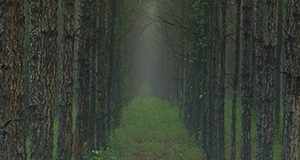
This 3-page fact sheet written by Byron Love, Michael Andreu, and Chris Demers and published by the UF/IFAS School of Forest Resources and Conservation summarizes a study to determine whether landowners may gain increased economic returns if they mark the first thinning in a southern pine stand. The study found that marking can indeed bring higher revenue at final harvest. The greater number of high-quality and faster-growing trees remaining after a marked thinning is the main reason for immediate and future increases in value.
http://edis.ifas.ufl.edu/fr410
Pest Identification Guide: Bondar’s Nesting Whitefly—Paraleyrodes bondari
Bondar’s nesting whitefly (Paraleyrodes bondari) is an emerging pest in Florida that targets ficus species, hibiscus, sugar apple, guava, and citrus, among others. Learn to identify these tiny flies with this handy, 2-page guide written by Nicole A. Casuso and Hugh A. Smith and published by the UF/IFAS Entomology and Nematology Department.
http://edis.ifas.ufl.edu/in1204
Storage of Decapsulated Artemia (Brine Shrimp)
Artemia (brine shrimp) are good food for larval fish, but they have to be removed from their shells before many species can eat them. The process can be time- and labor-intensive, especially since it is often performed every day. Fortunately, this 3-page fact sheet written by Jason Broach, Cortney Ohs, and Isaac Lee and published by the UF/IFAS School of Forest Resources and Conservation, Program in Fisheries and Aquatic Sciences describes a method for storing a 7-day supply of the brine shrimp that will allow the task to be done just once a week.
http://edis.ifas.ufl.edu/fa203
Eastern Mosquitofish, Gambusia holbrooki, for Control of Mosquito Larvae
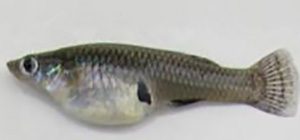
Using native animal species, particularly fish, to reduce mosquito populations is popular in multiple states including Florida. This 5-page fact sheet written by Eric Jon Cassiano, Jeffrey Hill, Quenton Tuckett, and Craig Watson and published by the Program in Fisheries and Aquatic Sciences within the UF/IFAS School of Forest Resources explains how to use eastern mosquitofish to control mosquitoes. It also discusses other native fish species that may reduce mosquito populations.
http://edis.ifas.ufl.edu/fa202
